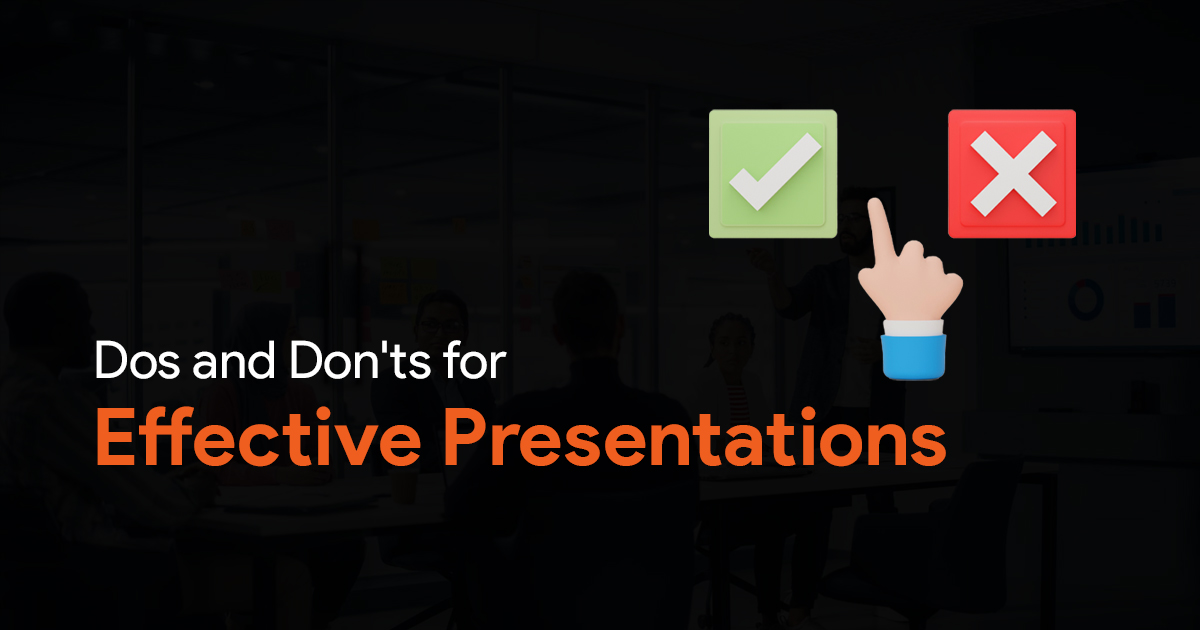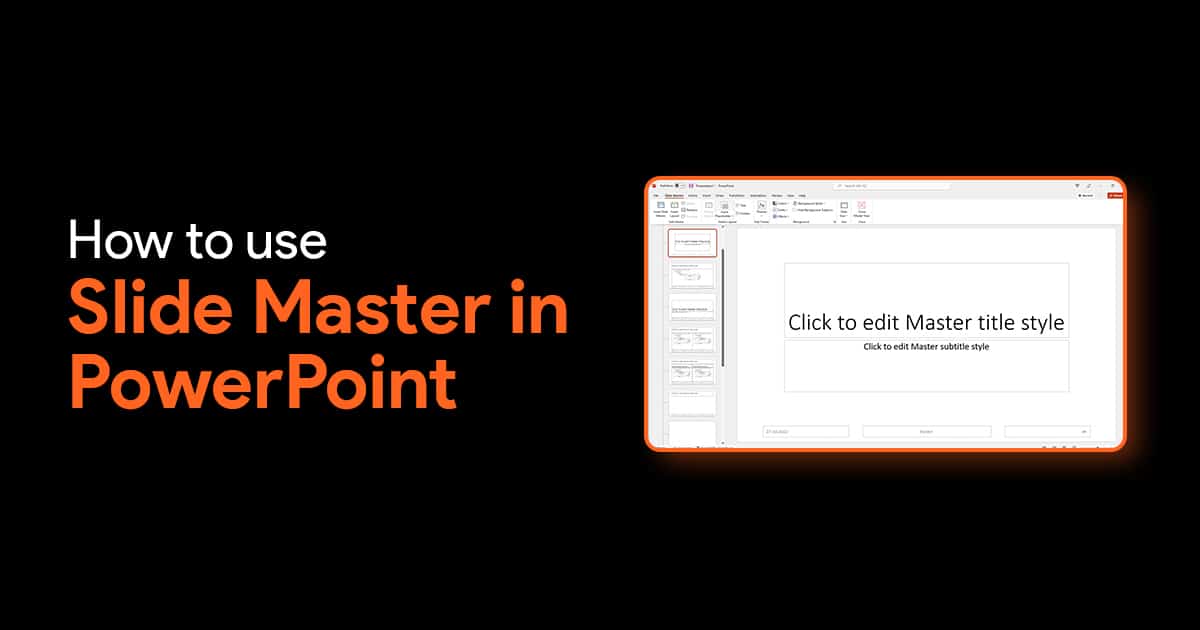- Do: Know Your Audience
- Don’t: Speak Over Their Heads
- Do: Craft a Compelling Structure
- Don’t: Let Your Slides Take Center Stage
- Do: Embrace the Power of Storytelling
- Don’t: Let Your Presentation Become a Monologue – Interact!
- Do: Master the Art of Delivery
- Don’t: Fidget or Pace
- Do: Harness the Power of Visuals
- Don’t: Overload Your Audience
Dos and Don’ts for Effective Presentations

Presentations, the word itself can evoke a range of emotions, from excitement to sheer dread. If you’ve worked on presentations, you know that delivering a successful presentation hinges on more than just the content itself. It’s about captivating your audience, leaving a lasting impression, and achieving your desired outcome. In this article, we’ll take a look at some things you should do, and some things you should not, while creating effective presentations.
Let’s start off with something you should definitely do:
Do: Know Your Audience
Before crafting even a single slide, consider your audience. Who are you speaking to? What’s their level of expertise on the topic? What are their interests and expectations? Tailoring your presentation to their needs ensures your message resonates, and it’s super important that you do. You presentation has to be tailored for you target audience.
If your audience does not understand technical jargon, use simple language, and focus on benefits. Always adjust your content based on your audience.
Don’t: Speak Over Their Heads
Complex terminology or in-depth explanations might leave your audience bewildered. This is why you should know who you are presenting to. Avoid overwhelming them with technical details unless absolutely necessary.
Do: Craft a Compelling Structure
A well-structured presentation guides your audience through your message logically. Think of it as a captivating story with a clear beginning, middle, and end.
Start Strong: Hook your audience with a thought-provoking question, a surprising statistic, or a captivating anecdote.
Organize Your Points: Clearly outline your main arguments or key takeaways.
End with a Bang: Conclude with a strong summary and a clear call to action, leaving the audience with something to remember.
Don’t: Let Your Slides Take Center Stage
Slides should complement your presentation, not replace it. Avoid lengthy text passages or overwhelming visuals, and reading out your slides. They’re made to support your speech, you are not supposed to read them out aloud. Here are some ways you can do this:
Focus on key concepts: Use concise bullet points or visuals to highlight essential ideas.
Let your speech shine: Your presentation should be the primary source of information, not the slides.
Do: Embrace the Power of Storytelling
Human beings are wired to connect with stories. Weaving narratives into your presentation fosters engagement and emotional connection. This makes it easier for people to emotionally connect with your presentation, and better understand what you’re trying to say. It leaves a bigger impact on them. Share personal experiences if you can. Relate anecdotes that illustrate your points, making them relatable.
Don’t: Let Your Presentation Become a Monologue – Interact!
Presentations don’t have to be one-sided affairs. Encourage audience interaction through polls, questions, or brief activities. Make use of interactive tools like polls and quizzes to make your presentations more interactive, fun and memorable.
Do: Master the Art of Delivery
Confidence and clarity are key to effective delivery. Your body language, vocal variety, and stage presence significantly impact your message’s impact. Maintain eye contact. Connect with your audience by making eye contact with different individuals throughout the room.
You should also focus on speaking clearly and confidently, ensuring everyone can hear you. Also pay attention to your body language. Open posture and natural gestures project confidence and enthusiasm.
Don’t: Fidget or Pace
Nervous habits like fidgeting or pacing distract the audience and detract from your message. Practice your delivery well and rehearse your presentation beforehand, allowing you to feel comfortable and confident. Shift your focus from your nerves to the information you’re presenting.
Do: Harness the Power of Visuals
Compelling visuals can elevate your presentation from informative to captivating. But be sure to use high-quality images that are clear and relevant to the topic. Also use data visualization tools, as they allow you to show much more than words ever can. But be sure to also maintain consistency. Visual style consistency is often overlooked when there’s too many visuals in presentations, but you should pay attention that it isn’t.
Don’t: Overload Your Audience
Avoid clutter on your slides at all costs. Visual clutter can overwhelm and distract the audience. Maintain a clean and uncluttered slide design. Check out our article on white space, and you’ll have a better idea on avoiding visual clutter in presentations.
Well, that’s about it, a short list of do’s and don’ts for creating and delivering effective presentations.
If you’re someone who worries about the design side of PowerPoint, and are looking for an easy solution, we’ve got you covered. Check out SlideBazaar’s collection of pre-built PowerPoint presentation themes and templates.


